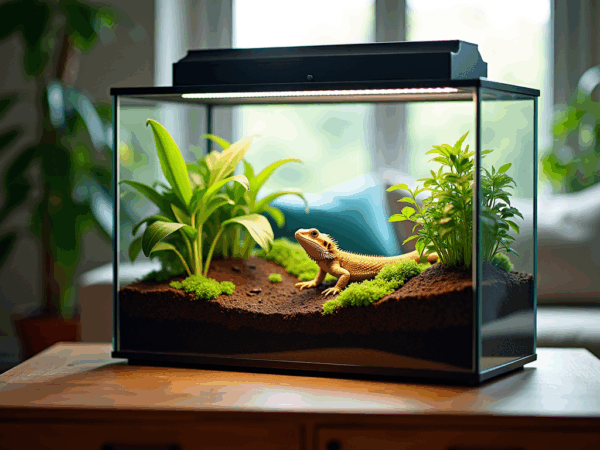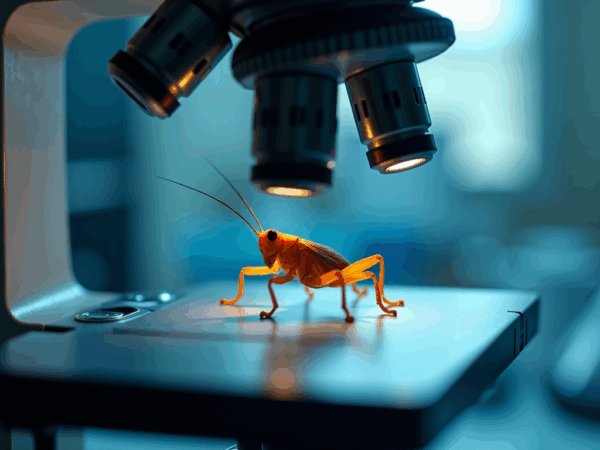WP_Query Object
(
[query] => Array
(
[post_type] => topic
[post_parent] => any
[meta_key] => _bbp_last_active_time
[meta_type] => DATETIME
[orderby] => meta_value
[order] => DESC
[posts_per_page] => 8
[paged] => 2
[show_stickies] => 1
[max_num_pages] =>
[update_post_family_cache] => 1
[perm] => readable
)
[query_vars] => Array
(
[post_type] => topic
[post_parent] => any
[meta_key] => _bbp_last_active_time
[meta_type] => DATETIME
[orderby] => meta_value
[order] => DESC
[posts_per_page] => 8
[paged] => 2
[show_stickies] => 1
[max_num_pages] =>
[update_post_family_cache] => 1
[perm] => readable
[error] =>
[m] =>
[p] => 0
[subpost] =>
[subpost_id] =>
[attachment] =>
[attachment_id] => 0
[name] =>
[pagename] =>
[page_id] => 0
[second] =>
[minute] =>
[hour] =>
[day] => 0
[monthnum] => 0
[year] => 0
[w] => 0
[category_name] =>
[tag] =>
[cat] =>
[tag_id] =>
[author] =>
[author_name] =>
[feed] =>
[tb] =>
[meta_value] =>
[preview] =>
[s] =>
[sentence] =>
[title] =>
[fields] => all
[menu_order] =>
[embed] =>
[category__in] => Array
(
)
[category__not_in] => Array
(
)
[category__and] => Array
(
)
[post__in] => Array
(
)
[post__not_in] => Array
(
)
[post_name__in] => Array
(
)
[tag__in] => Array
(
)
[tag__not_in] => Array
(
)
[tag__and] => Array
(
)
[tag_slug__in] => Array
(
)
[tag_slug__and] => Array
(
)
[post_parent__in] => Array
(
)
[post_parent__not_in] => Array
(
)
[author__in] => Array
(
)
[author__not_in] => Array
(
)
[search_columns] => Array
(
)
[ignore_sticky_posts] =>
[suppress_filters] =>
[cache_results] => 1
[update_post_term_cache] => 1
[update_menu_item_cache] =>
[lazy_load_term_meta] => 1
[update_post_meta_cache] => 1
[nopaging] =>
[comments_per_page] => 50
[no_found_rows] =>
)
[tax_query] => WP_Tax_Query Object
(
[queries] => Array
(
)
[relation] => AND
[table_aliases:protected] => Array
(
)
[queried_terms] => Array
(
)
[primary_table] => wp_posts
[primary_id_column] => ID
)
[meta_query] => WP_Meta_Query Object
(
[queries] => Array
(
[0] => Array
(
[key] => _bbp_last_active_time
[type] => DATETIME
)
[relation] => OR
)
[relation] => AND
[meta_table] => wp_postmeta
[meta_id_column] => post_id
[primary_table] => wp_posts
[primary_id_column] => ID
[table_aliases:protected] => Array
(
[0] => wp_postmeta
)
[clauses:protected] => Array
(
[wp_postmeta] => Array
(
[key] => _bbp_last_active_time
[type] => DATETIME
[compare] => =
[compare_key] => =
[alias] => wp_postmeta
[cast] => DATETIME
)
)
[has_or_relation:protected] =>
)
[date_query] =>
[request] => SELECT SQL_CALC_FOUND_ROWS wp_posts.ID
FROM wp_posts INNER JOIN wp_postmeta ON ( wp_posts.ID = wp_postmeta.post_id )
WHERE 1=1 AND (
wp_postmeta.meta_key = '_bbp_last_active_time'
) AND ((wp_posts.post_type = 'topic' AND (wp_posts.post_status = 'publish' OR wp_posts.post_status = 'closed' OR wp_posts.post_status = 'acf-disabled')))
GROUP BY wp_posts.ID
ORDER BY CAST(wp_postmeta.meta_value AS DATETIME) DESC
LIMIT 8, 8
[posts] => Array
(
[0] => WP_Post Object
(
[ID] => 109985
[post_author] => 286690
[post_date] => 2025-11-26 17:49:39
[post_date_gmt] => 2025-11-26 22:49:39
[post_content] => In a nutshell, brumation is the reptile equivalent of hibernation. Brumation is a very unpredictable process - some beardies never brumate, others brumate every year. During brumation, a bearded dragon will drop its body temperature and metabolism and enter a deep sleep. When you see the signs, you’ll know it’s time for a trip to the vet. After the vet confirms your beardy is not sick, you'll need to help them clear their digestive tract and start limiting their UV light. Check out our full article to find out how to prepare your beardy for brumation.
[post_title] => Getting Your Bearded Dragon Ready for Brumation
[post_excerpt] =>
[post_status] => publish
[comment_status] => closed
[ping_status] => closed
[post_password] =>
[post_name] => getting-your-bearded-dragon-ready-for-brumation
[to_ping] =>
[pinged] =>
[post_modified] => 2025-11-26 17:49:39
[post_modified_gmt] => 2025-11-26 22:49:39
[post_content_filtered] =>
[post_parent] => 64
[guid] => https://critterfam.com/forums/topic/getting-your-bearded-dragon-ready-for-brumation/
[menu_order] => 0
[post_type] => topic
[post_mime_type] =>
[comment_count] => 0
[filter] => raw
)
[1] => WP_Post Object
(
[ID] => 109983
[post_author] => 286690
[post_date] => 2025-11-26 17:43:20
[post_date_gmt] => 2025-11-26 22:43:20
[post_content] => Brumation is basically hibernation, but for reptiles. In leopard geckos, this normally presents itself when your leopard gecko becomes lethargic and has less appetite. If you’re not looking closely, it might seem like your leopard gecko is sick. Either way, if your leopard gecko starts slowing down and stops eating, it’s time for a trip to the vet. Then, you need to start weaning your gecko off of food and preparing a hibernation room. Check out all the details in our full article.
[post_title] => Getting Your Leopard Gecko Ready for Brumation
[post_excerpt] =>
[post_status] => publish
[comment_status] => closed
[ping_status] => closed
[post_password] =>
[post_name] => getting-your-leopard-gecko-ready-for-brumation
[to_ping] =>
[pinged] =>
[post_modified] => 2025-11-26 17:43:20
[post_modified_gmt] => 2025-11-26 22:43:20
[post_content_filtered] =>
[post_parent] => 68
[guid] => https://critterfam.com/forums/topic/getting-your-leopard-gecko-ready-for-brumation/
[menu_order] => 0
[post_type] => topic
[post_mime_type] =>
[comment_count] => 0
[filter] => raw
)
[2] => WP_Post Object
(
[ID] => 109981
[post_author] => 286690
[post_date] => 2025-11-11 18:34:07
[post_date_gmt] => 2025-11-11 23:34:07
[post_content] => Impaction is one of the most serious issues that all reptiles might face, and can be deadly if left untreated. But it is fully avoidable, if you pick the right substrate. The biggest no-nos to avoid are woodchips, calcium sand, and reptile carpets, which are all bad for different reasons. You should also be careful not to use any unwashed substrate in your pet's vivarium. For all our substrate tips, check out our full write-up.
[post_title] => The Right Substrate for Your Reptile: A Guide to Preventing Impaction
[post_excerpt] =>
[post_status] => publish
[comment_status] => closed
[ping_status] => closed
[post_password] =>
[post_name] => the-right-substrate-for-your-reptile-a-guide-to-preventing-impaction-2
[to_ping] =>
[pinged] =>
[post_modified] => 2025-11-11 18:34:07
[post_modified_gmt] => 2025-11-11 23:34:07
[post_content_filtered] =>
[post_parent] => 64
[guid] => https://critterfam.com/forums/topic/the-right-substrate-for-your-reptile-a-guide-to-preventing-impaction-2/
[menu_order] => 0
[post_type] => topic
[post_mime_type] =>
[comment_count] => 0
[filter] => raw
)
[3] => WP_Post Object
(
[ID] => 109978
[post_author] => 286690
[post_date] => 2025-10-31 19:02:09
[post_date_gmt] => 2025-10-31 23:02:09
[post_content] => In a nutshell, impaction is a blockage of the intestines or digestive tract. It’s normally due to ingesting substrate from your pet’s habitat. This mainly happens accidentally during mealtime. The best way to avoid this is to be careful choosing your substrate. The biggest substrates to avoid are wood chips, vita sand, and reptile carpet. In our full article, we talk about the reasons why, and which substrates you should choose instead.
[post_title] => The Right Substrate for Your Reptile: A Guide to Preventing Impaction
[post_excerpt] =>
[post_status] => publish
[comment_status] => closed
[ping_status] => closed
[post_password] =>
[post_name] => the-right-substrate-for-your-reptile-a-guide-to-preventing-impaction
[to_ping] =>
[pinged] =>
[post_modified] => 2025-10-31 19:02:09
[post_modified_gmt] => 2025-10-31 23:02:09
[post_content_filtered] =>
[post_parent] => 64
[guid] => https://critterfam.com/forums/topic/the-right-substrate-for-your-reptile-a-guide-to-preventing-impaction/
[menu_order] => 0
[post_type] => topic
[post_mime_type] =>
[comment_count] => 0
[filter] => raw
)
[4] => WP_Post Object
(
[ID] => 109976
[post_author] => 286690
[post_date] => 2025-10-26 12:33:36
[post_date_gmt] => 2025-10-26 16:33:36
[post_content] => If your reptile stops eating suddenly, it might be a sign that it's time for a trip to the vet. But there are lots of reasons for loss of appetite in reptiles. They may be stressed, too hot or cold, or even in brumation. In some cases, they just need a change of diet or routine to get them eating again. Check out our full write up to see why your pet isn't eating, and whether it's time to go to your veterinarian.
[post_title] => The Picky Eater Problem: Tips and Tricks to Get Your Reptile Eating Again
[post_excerpt] =>
[post_status] => publish
[comment_status] => closed
[ping_status] => closed
[post_password] =>
[post_name] => the-picky-eater-problem-tips-and-tricks-to-get-your-reptile-eating-again
[to_ping] =>
[pinged] =>
[post_modified] => 2025-10-26 12:33:36
[post_modified_gmt] => 2025-10-26 16:33:36
[post_content_filtered] =>
[post_parent] => 64
[guid] => https://critterfam.com/forums/topic/the-picky-eater-problem-tips-and-tricks-to-get-your-reptile-eating-again/
[menu_order] => 0
[post_type] => topic
[post_mime_type] =>
[comment_count] => 0
[filter] => raw
)
[5] => WP_Post Object
(
[ID] => 109913
[post_author] => 286690
[post_date] => 2025-06-23 14:11:54
[post_date_gmt] => 2025-06-23 18:11:54
[post_content] => Bearded dragons might need some extra help to regulate their body temperatures in the summer. The daytime temperature on your beardy’s basking rock should be between 95° and 110°, never exceeding 115° F. The cool side of the habitat should be 77°-85° during the day. At night, you should reduce the temps to 55°-75°. They can’t sweat or shiver like mammals do- they need the sun to keep them warm and shade or water to cool them back off. A few strategies for keeping the enclosure cool include rearranging heating elements and hides, misting and bathing, and climate controlling the room your beardy is in. For all the details, check out our full write-up here.
[post_title] => How Should I Adjust My Bearded Dragon Husbandry for Summer?
[post_excerpt] =>
[post_status] => publish
[comment_status] => closed
[ping_status] => closed
[post_password] =>
[post_name] => how-should-i-adjust-my-bearded-dragon-husbandry-for-summer
[to_ping] =>
[pinged] =>
[post_modified] => 2025-06-23 14:11:54
[post_modified_gmt] => 2025-06-23 18:11:54
[post_content_filtered] =>
[post_parent] => 64
[guid] => https://critterfam.com/forums/topic/how-should-i-adjust-my-bearded-dragon-husbandry-for-summer/
[menu_order] => 0
[post_type] => topic
[post_mime_type] =>
[comment_count] => 0
[filter] => raw
)
[6] => WP_Post Object
(
[ID] => 109967
[post_author] => 286690
[post_date] => 2025-10-07 07:33:42
[post_date_gmt] => 2025-10-07 11:33:42
[post_content] => How can you tell if your pet’s lack of appetite is serious or just a simple case of being picky? There are three main reasons your bearded dragon, leopard gecko, pixie frog, or other herpene pet might not be eating. First, it might be a health issue. Second, it might be due to stress. And third, it might just be due to boredom or a lack of variety. Check out our full article to figure out why your pet won't eat.
[post_title] => Picky Eaters: Tips and Tricks to Get Your Reptile Eating Again
[post_excerpt] =>
[post_status] => publish
[comment_status] => closed
[ping_status] => closed
[post_password] =>
[post_name] => picky-eaters-tips-and-tricks-to-get-your-reptile-eating-again
[to_ping] =>
[pinged] =>
[post_modified] => 2025-10-07 07:33:42
[post_modified_gmt] => 2025-10-07 11:33:42
[post_content_filtered] =>
[post_parent] => 64
[guid] => https://critterfam.com/forums/topic/picky-eaters-tips-and-tricks-to-get-your-reptile-eating-again/
[menu_order] => 0
[post_type] => topic
[post_mime_type] =>
[comment_count] => 0
[filter] => raw
)
[7] => WP_Post Object
(
[ID] => 109963
[post_author] => 286690
[post_date] => 2025-09-25 12:22:34
[post_date_gmt] => 2025-09-25 16:22:34
[post_content] => Getting crickets to grow as fast as possible is all about meeting their needs perfectly in a clean, stress-free environment. Like all insects, crickets need a specific mix of heat, moisture, and nutrition to be healthy. The magic numbers for temperature and humidity are right around 90°F and 60% humidity. For all the details on how to get a cricket colony to produce as much as possible, check out our full write-up.
[post_title] => How to Get Crickets to Grow Faster
[post_excerpt] =>
[post_status] => publish
[comment_status] => closed
[ping_status] => closed
[post_password] =>
[post_name] => how-to-get-crickets-to-grow-faster
[to_ping] =>
[pinged] =>
[post_modified] => 2025-09-25 12:22:34
[post_modified_gmt] => 2025-09-25 16:22:34
[post_content_filtered] =>
[post_parent] => 177
[guid] => https://critterfam.com/forums/topic/how-to-get-crickets-to-grow-faster/
[menu_order] => 0
[post_type] => topic
[post_mime_type] =>
[comment_count] => 0
[filter] => raw
)
)
[post_count] => 8
[current_post] => -1
[before_loop] => 1
[in_the_loop] =>
[post] => WP_Post Object
(
[ID] => 109985
[post_author] => 286690
[post_date] => 2025-11-26 17:49:39
[post_date_gmt] => 2025-11-26 22:49:39
[post_content] => In a nutshell, brumation is the reptile equivalent of hibernation. Brumation is a very unpredictable process - some beardies never brumate, others brumate every year. During brumation, a bearded dragon will drop its body temperature and metabolism and enter a deep sleep. When you see the signs, you’ll know it’s time for a trip to the vet. After the vet confirms your beardy is not sick, you'll need to help them clear their digestive tract and start limiting their UV light. Check out our full article to find out how to prepare your beardy for brumation.
[post_title] => Getting Your Bearded Dragon Ready for Brumation
[post_excerpt] =>
[post_status] => publish
[comment_status] => closed
[ping_status] => closed
[post_password] =>
[post_name] => getting-your-bearded-dragon-ready-for-brumation
[to_ping] =>
[pinged] =>
[post_modified] => 2025-11-26 17:49:39
[post_modified_gmt] => 2025-11-26 22:49:39
[post_content_filtered] =>
[post_parent] => 64
[guid] => https://critterfam.com/forums/topic/getting-your-bearded-dragon-ready-for-brumation/
[menu_order] => 0
[post_type] => topic
[post_mime_type] =>
[comment_count] => 0
[filter] => raw
)
[comment_count] => 0
[current_comment] => -1
[found_posts] => 1956
[max_num_pages] => 245
[max_num_comment_pages] => 0
[is_single] =>
[is_preview] =>
[is_page] =>
[is_archive] => 1
[is_date] =>
[is_year] =>
[is_month] =>
[is_day] =>
[is_time] =>
[is_author] =>
[is_category] =>
[is_tag] =>
[is_tax] =>
[is_search] =>
[is_feed] =>
[is_comment_feed] =>
[is_trackback] =>
[is_home] =>
[is_privacy_policy] =>
[is_404] =>
[is_embed] =>
[is_paged] => 1
[is_admin] =>
[is_attachment] =>
[is_singular] =>
[is_robots] =>
[is_favicon] =>
[is_posts_page] =>
[is_post_type_archive] => 1
[query_vars_hash:WP_Query:private] => 13644a1107688e4fbc5d995113629c48
[query_vars_changed:WP_Query:private] =>
[thumbnails_cached] =>
[allow_query_attachment_by_filename:protected] =>
[stopwords:WP_Query:private] =>
[compat_fields:WP_Query:private] => Array
(
[0] => query_vars_hash
[1] => query_vars_changed
)
[compat_methods:WP_Query:private] => Array
(
[0] => init_query_flags
[1] => parse_tax_query
)
[query_cache_key:WP_Query:private] => wp_query:eb22ae5e30b460fe5d03a77a80628a56
[posts_per_page] => 8
[paged] => 2
[pagination_links] =>
1
2
3
…
243
244
245
)
-
0
Favorite
 Read Post
0 comments
Started By
Read Post
0 comments
Started By  Conrad Lucas
Conrad Lucas
Getting Your Bearded Dragon Ready for Brumation
Bearded Dragons | 0 comments |In a nutshell, brumation is the reptile equivalent of hibernation. Brumation is a very unpredictable process – some beardies never brumate, others brumate every year. During brumation,…
-
0
Favorite
 Read Post
0 comments
Started By
Read Post
0 comments
Started By  Conrad Lucas
Conrad Lucas
Getting Your Leopard Gecko Ready for Brumation
Leopard Geckos | 0 comments |Brumation is basically hibernation, but for reptiles. In leopard geckos, this normally presents itself when your leopard gecko becomes lethargic and has less appetite. If you’re not looking…
-
0
Favorite
 Read Post
0 comments
Started By
Read Post
0 comments
Started By  Conrad Lucas
Conrad Lucas
The Right Substrate for Your Reptile: A Guide to Preventing Impaction
Bearded Dragons | 0 comments |Impaction is one of the most serious issues that all reptiles might face, and can be deadly if left untreated. But it is fully avoidable, if you pick the right substrate. The biggest no-nos…
-
0
Favorite
 Read Post
0 comments
Started By
Read Post
0 comments
Started By  Conrad Lucas
Conrad Lucas
The Right Substrate for Your Reptile: A Guide to Preventing Impaction
Bearded Dragons | 0 comments |In a nutshell, impaction is a blockage of the intestines or digestive tract. It’s normally due to ingesting substrate from your pet’s habitat. This mainly happens accidentally during…
-
0
Favorite
 Read Post
0 comments
Started By
Read Post
0 comments
Started By  Conrad Lucas
Conrad Lucas
The Picky Eater Problem: Tips and Tricks to Get Your Reptile Eating Again
Bearded Dragons | 0 comments |If your reptile stops eating suddenly, it might be a sign that it’s time for a trip to the vet. But there are lots of reasons for loss of appetite in reptiles. They may be stressed, too…
-
0
Favorite
 Read Post
1 comments
Started By
Read Post
1 comments
Started By  Conrad Lucas
Conrad Lucas
How Should I Adjust My Bearded Dragon Husbandry for Summer?
Bearded Dragons | 1 comments |Bearded dragons might need some extra help to regulate their body temperatures in the summer. The daytime temperature on your beardy’s basking rock should be between 95° and 110°, never…
-
0
Favorite
 Read Post
0 comments
Started By
Read Post
0 comments
Started By  Conrad Lucas
Conrad Lucas
Picky Eaters: Tips and Tricks to Get Your Reptile Eating Again
Bearded Dragons | 0 comments |How can you tell if your pet’s lack of appetite is serious or just a simple case of being picky? There are three main reasons your bearded dragon, leopard gecko, pixie frog, or other herpene…
-
0
Favorite
 Read Post
0 comments
Started By
Read Post
0 comments
Started By  Conrad Lucas
Conrad Lucas
How to Get Crickets to Grow Faster
Everything Else | 0 comments |Getting crickets to grow as fast as possible is all about meeting their needs perfectly in a clean, stress-free environment. Like all insects, crickets need a specific mix of heat, moisture,…
(adsbygoogle = window.adsbygoogle || []).push({});
